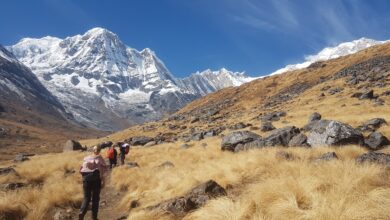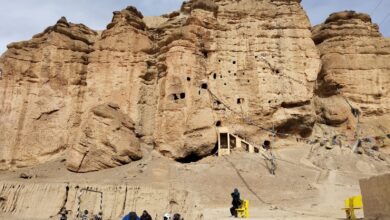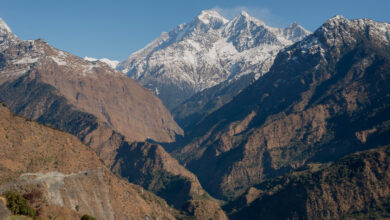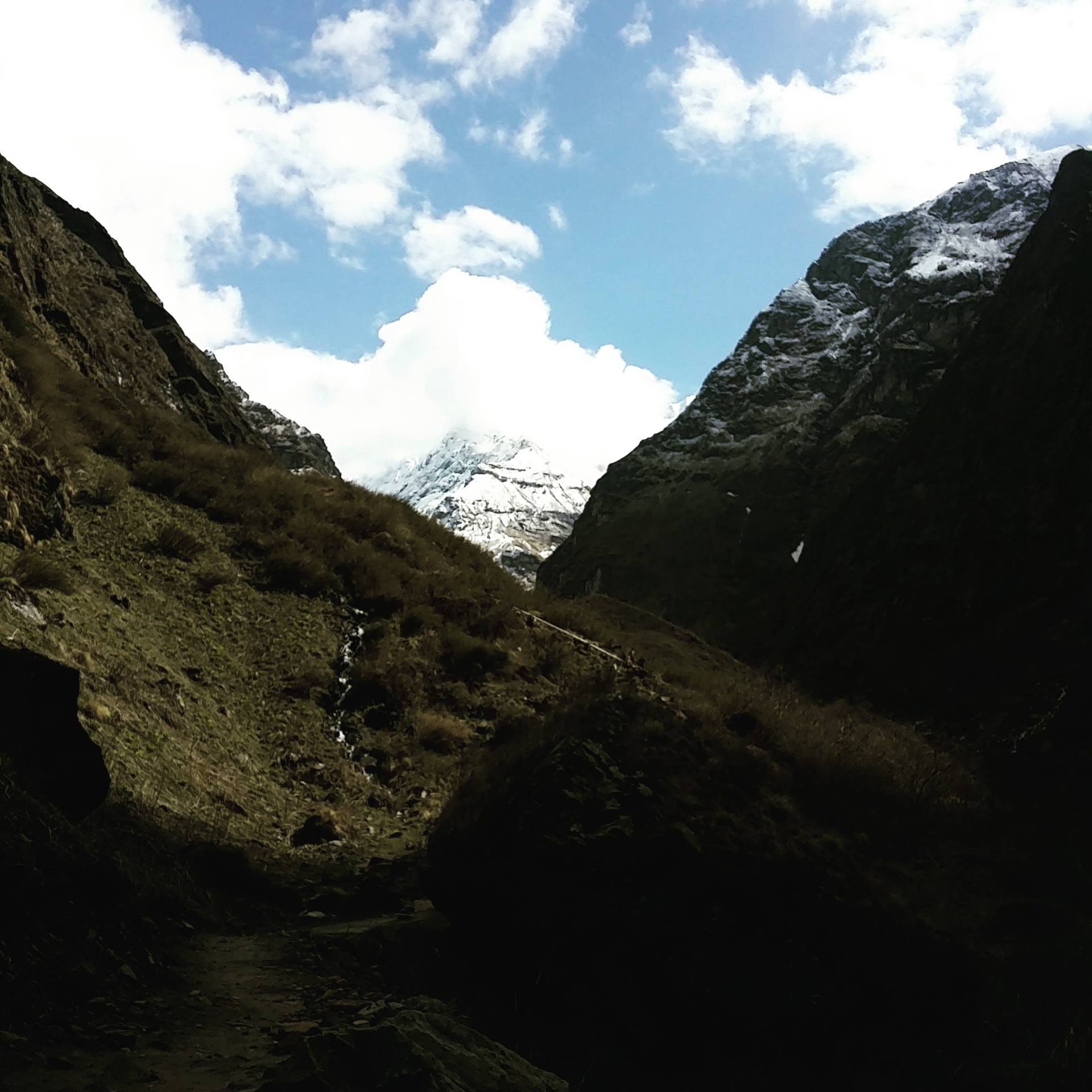Annapurna Treks
Annapurna Circuit Trek Redefined for 2025/2026! More Comfort, More Views, More Unforgettable Moments!
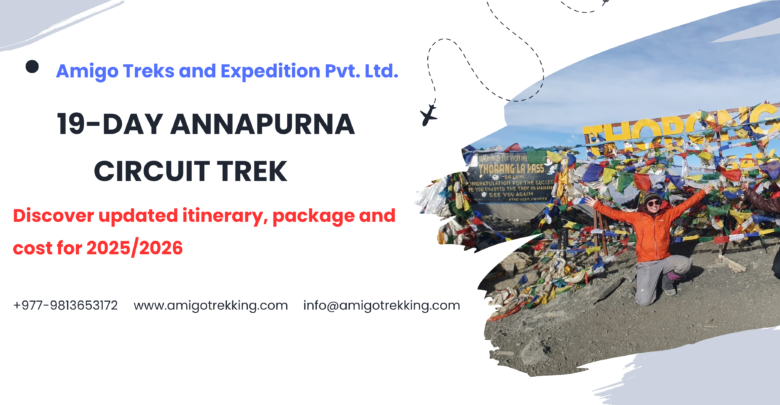
Discover why Amigo Treks and Expedition’s updated 19-day Annapurna Circuit Trek is the perfect choice for your 2025/2026 adventure!
For those who have known Nepal only for Everest and its base camp trek, Amigo Treks and Expedition would like to introduce one of the most accessible and rewarding alternatives, Annapurna Circuit Trek – a journey that offers breathtaking landscapes, rich cultural experience and Himalayan vistas that will embed in your memory like a timeless melody that plays every time you recall the beauty of the Himalayas.
What is Annapurna Circuit Trek?
The key to understanding the Annapurna Circuit Trek lies in knowing the Annapurna Massif.
Annapurna massif is a compact group of mountains that accommodating the 10th highest peak in the world- Annapurna I (8,091m), provides home to several other prominent peaks, such as Annapurna II (7,937m), Annapurna III (7,555m), Annapurna IV (7,525m), Annapurna South (7,219m), Gangapurna (7,455m), Machhapuchhre(6,993m), as well as Hiunchuli (6,441m). The highest point of this massif is the summit of Annapurna I, that is 8,091m above sea level and for this reason this vast mountain range is also known as the Annapurna I mountain range.
Thus, Annapurna Circuit Trek is a walking journey around this beautiful massif. It’s a multi-day, high-altitude trekking route that makes trekkers circumambulate this massif. The highest point of this trek is 5,416 meters at Thorung La Pass, which is also one of the highest mountain passes in the world.
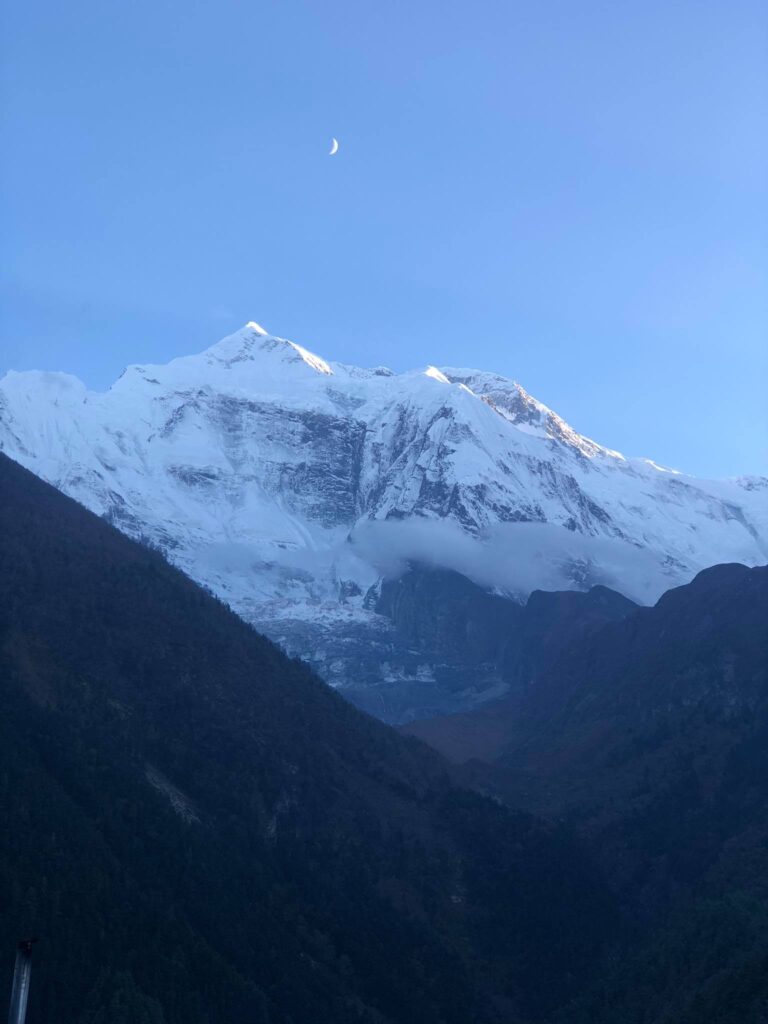
Where is the Annapurna Circuit Trek located & where does the Annapurna Circuit Trek start?
Where is the Annapurna Circuit Trek located, and where does the Annapurna Circuit Trek start?
Annapurna Circuit Trek is located in north-central Nepal (Gandaki Province), within the Annapurna Conservation Area. Being one of the longest trekking trails in Nepal, the trail goes through Lamjung and Manang district- running along the Marsyangdi River, before descending to Mustang and Myagdi district -running along the Kali Gandaki River.
The classic Annapurna Circuit trek typically begins in Besisahar or Bhulbhule and gently ascends through diverse landscapes – terraced fields and lush subtropical forests to alpine valleys and eventually to the high mountain pass. However, the extension of road networks up to Manang has significantly altered the traditional Annapurna Circuit trekking route. Hence, these days the starting point of the trek varies depending on how many days you plan to spend on the journey and how far you want to avoid the motorable road. The most common present-day starting points are Jagat (1,300m), Dharapani (1,860m) or Chame (2,670m).
Annapurna Circuit Trek is one of the long distance treks in Nepal. But how long does Annapurna Circuit Trek take?
Annapurna Circuit Trek distance varies with the choice of route and the starting and the ending point of the trek. For example;
- Starting Besisahar and finishing in Jomsom the distance will be around 140 kms
- Starting Besisahar and finishing in Ulleri the distance will be around 209 kms
- Starting Jagat and finishing in Jomsom the distance will be around 118 kms
- Starting Jagat and finishing in Ulleri the distance will be around 186 kms
- Starting Dharapani and finishing in Jomsom the distance will be around 110 kms
- Starting Dharapani and finishing in Ulleri the distance will be around 179 kms
- Starting in Chame and finishing in Jomsom the distance will be around 86 kms
- Starting in Chame and finishing in Ulleri the distance will be around 156 kms
Moreover, including Tadapani and Ghandruk in the itinerary will increase the Annapurna Circuit Trek distance by approximately 15 kilometers and adding Tilicho Lake side trip will increase the distance by an extra 30 kilometers.
How many days does Annapurna Circuit Trek take?
There are various factors that affect the duration of the trek.
- If you are planning to end your Annapurna Circuit Trek in Jomsom, and take a flight or a road transportation to Pokhara, the trekking journey takes roughly 11 days (if you start from Besisahar), 9 days (if you start from Jagat), 8 days (if you start from Dharapani) and 7 days (if you start from Chame). Therefore, depending on the start point the Annapurna Circuit trek that ends in Jomsom takes 7-11 days.
- If you are planning a full Annapurna Circuit trek that extends to Ghorepani and Poon Hill, additional 4 days will be required to complete the journey on foot. However, if you want to avoid trekking on a motorable road, an additional 3 days should be enough to complete this trekking journey.
- Planning to visit the Ice Lake in Manang? Add one more day to the itinerary.
- Planning to hike to Tilicho Lake? Add 3 more days to the itinerary
- Whether you are opting for a short Annapurna Circuit Trek or looking for a longer version, this trek perfectly ends with a flight from Jomsom to Pokhara or drive to Pokhara city in Nepal from Jomsom, Ulleri or Ghorepani.
Thus, depending on your preference the Annapurna Circuit Trek itinerary can be adjusted between 7 to 18 days. Amigo Treks and Expedition offers 3 different standard Annapurna Circuit Trek itineraries: 19 days Annapurna Circuit Trek, 15 days Short Annapurna Circuit Trek and 15 days Annapurna Circuit with Tilicho Lake Trek, which can be fully customized to meet your specific requirements.
How hard is Annapurna Circuit Trek?
The Annapurna Circuit Trek difficulty level is often categorized under moderate to challenging. The trek is moderate because it follows well-established trails, offers gradual altitude gain with opportunities for acclimatization and does not require technical climbing skills. It is challenging because it involves long walking days, steep ascents and descents, demanding altitude, especially at Thorung La mountain pass (5,416m) in Nepal, posing risk of altitude sickness- all of which requires good physical fitness and mental endurance.
For trekkers with a good fitness level and some prior high-altitude hiking experience this trek is a very rewarding experience that offers manageable challenges, breathtaking scenery and a deep sense of accomplishment. However, for physically fit beginners, with careful preparation, proper acclimatization and a gradual pace to safely handle the high altitude and long walking days, this Annapurna Circuit Trek can be made less challenging and an achievable goal.
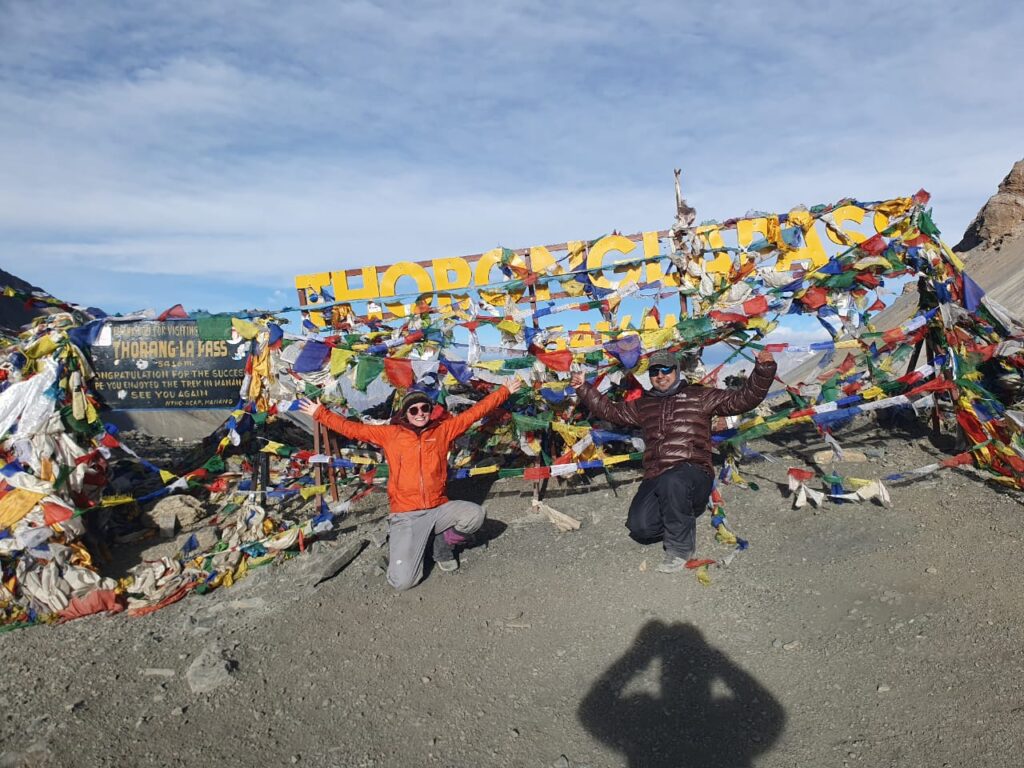
What is the best time to take up the Annapurna Circuit trekking challenge?
Like any other treks in Nepal, the best time for Annapurna Circuit Trek is spring (March-May) and fall (September to early-December). While Spring offers stable weather conditions, blooming Rhododendrons, impeccable mountain views and longer days to comfortably complete each day, Fall/Autumn offers post-monsoon clarity, perfect temperature, high visibility and festival ambiance, promising higher success rate. However, in recent years warmer/milder winters have made this trek more feasible during the colder months as well. Therefore, if you are planning to do the Annapurna Circuit Trek in December, January or February, winter has definitely become a practical choice.
If best time refers to best visibility, what mountains can I see during the Annapurna Circuit Trek?
On this trek you are circling not just a mountain, but the entire massif, therefore, during Annapurna Circuit Trek days, the mountain views are ample. However, the most prominent views are of Manaslu, Lamjung Himal, Annapurna-I, II, III, IV, South, Gangapurna, Pisang Peak, Tilicho Peak, Chulu East, Center, West, Tare Kang, Yakwakang, Khangsar, Thorung Peak, Singu Chuli, Tharpu Chuli, Baraha Sikhar Chuli, Nilgiri-south, central north, Dhaulagiri, Tukuche, Hiunchuli, Machhapuchhre, Mardi Himal, Gandarwa Chuli as well as Thapa Peak. These peaks are visible from different sections of the Annapurna Circuit trekking trail.
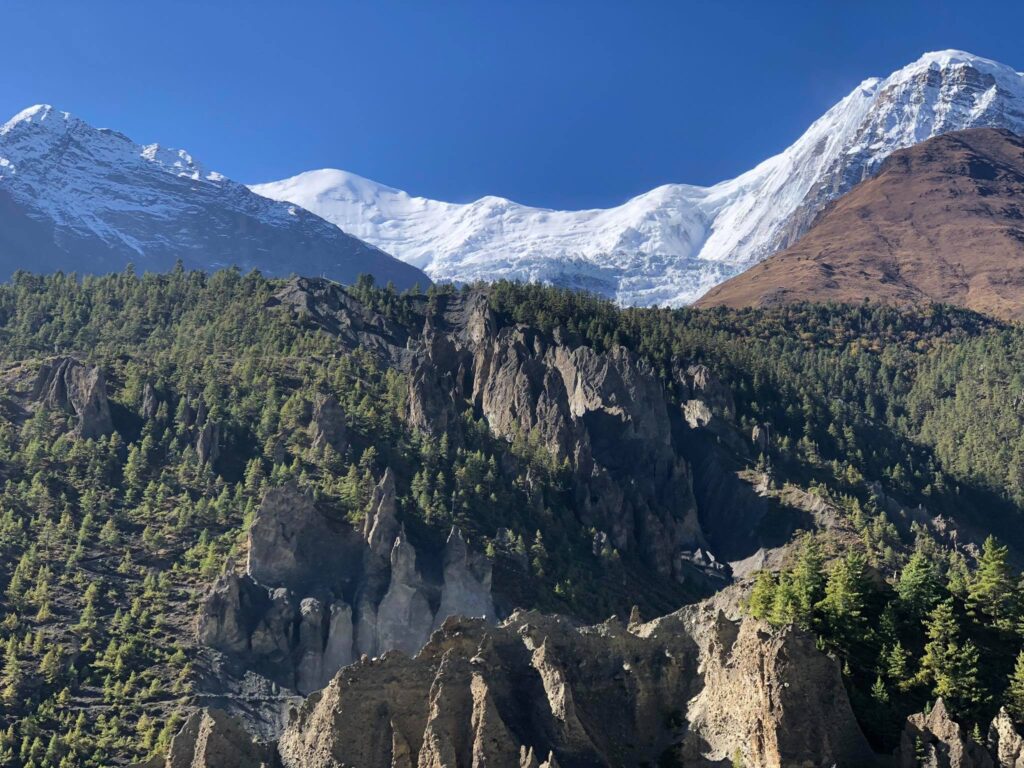
What do Annapurna Circuit Trek accommodation options look like?
Most of the normal standard lodges, along the trail, offer twin-room accommodation with basic room amenities and attached toilet/bathroom. Packages offered by most of the Annapurna Circuit trek companies will accommodate trekkers in these lodges. The rooms will be basic, but cosy, clean and comfortable. The twin-room usually offers two separate single beds, mattress, a pillow and a blanket for each bed. The toilets are attached to the room with some offering hot shower facility. However, at Tilicho Base Camp and Thorung High Camp, the accommodation options are very limited in number and the rooms are mostly provided on a multiple-sharing basis with bunker beds in each room and no attached toilets.
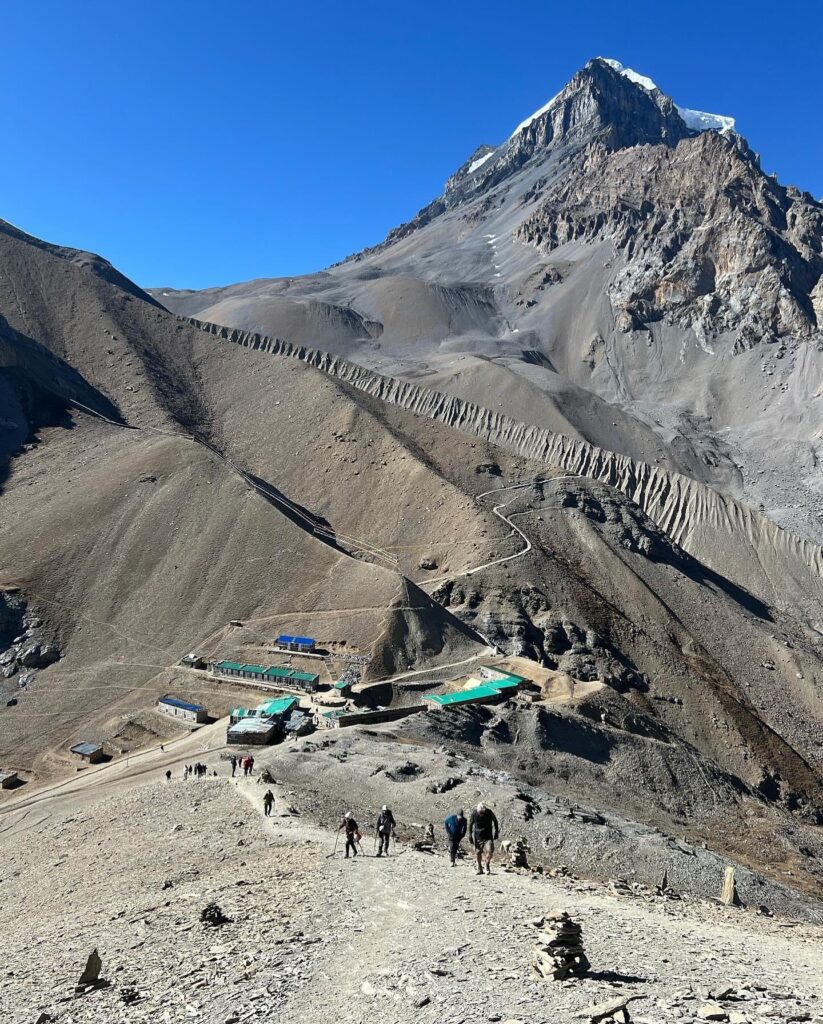
Moreover, for those looking for a premium upgrade, a few nightstops, such as Chame, Pisang, Ngawal, Manang, Muktinath, Jomsom,Tatopani as well as Ghorepani also offer deluxe and luxury upgrades. Thus, if you are planning a luxury Annapurna Circuit Trek escape, you can now plan one.
What are the meal options like on Annapurna Circuit Trek?
The meal options during the Annapurna Circuit Trek are generally hearty, simple and designed to provide energy for trekkers. The menu looks similar across the villages, but the options decrease with the increase in altitude.
Breakfasts during the trek are usually porridge, pancakes, Tibetan bread, chapati, toast with eggs, muesli or cornflakes with milk. Tea or coffee is also served with breakfast.
For lunch and dinner you have the choice of Nepali food options, such as Dal Bhat (which means lentil soup and rice), Thukpa, Momo, Chowmein, Fried Rice, Tibetan bread pizza etc, as well as western inspired dishes, such as Pasta, Veg or cheese sandwiches, burgers, fries as well as instant noodles. For drinks milk tea, black tea, lemon tea, hot lemon with ginger and honey (preferred by most during the trek), and instant or brewed coffee, hot chocolate (at some places) are available.
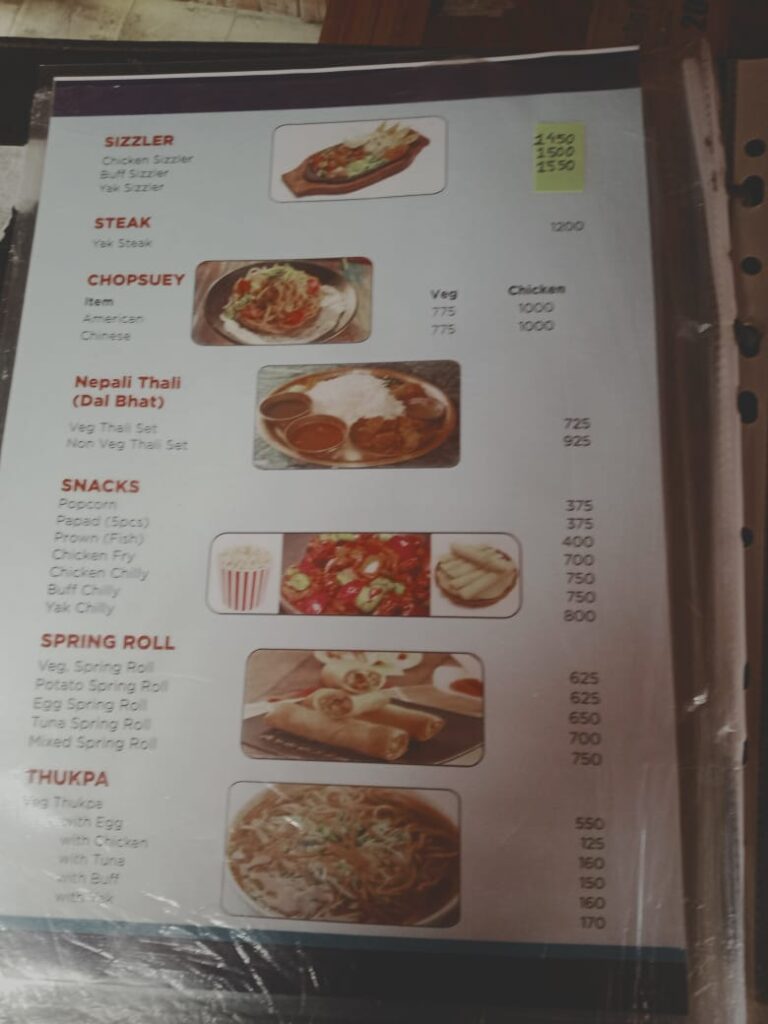
Vegetarian options are widely available and mostly recommended. A typical Nepali meal (Rice, Dal, Curry, Pickle) is the most common vegan and gluten free option available during the Annapurna Circuit Trek. If you have any dietary restrictions, your Annapurna Circuit trek guide will take care of it and will make sure the restricted ones are not served, instead the alternate options are provided.
Is it mandatory to hire an Annapurna Circuit trekking guide for this trek or is it possible to trek independently?
Trekking guides in Nepal are licensed by the Government of Nepal after going through official training and meeting eligibility criteria. These guides are 18+, are physically fit, speak basic English and fluent Nepali language. These guides have adequate training in First Aid, mountain safety, emergency response to altitude sickness and other unforeseen emergencies, map reading and navigation, communication, leadership and responsible tourism and eco-guiding.
Hence, a company of a person with such skills improves safety and navigation, especially in remote and weather prone areas; makes logistics, permits, and teahouse/lodge bookings easy; provides the knowledge of local culture, trails, side trips and accommodations; helps communicate with local people and provide great support in emergencies.
Thus, whether the government makes it mandatory to hire a local guide for high altitude or any other treks in Nepal or not, it’s always good to hire a guide. Yes, hiring a guide adds extra expenses to your Annapurna Circuit trekking budget, but in the end it’s all worth it. Moreover, if you are on a tight budget, you can also choose to join existing guided groups that will help you enjoy the service of a guide without having to pay a lot for the service.
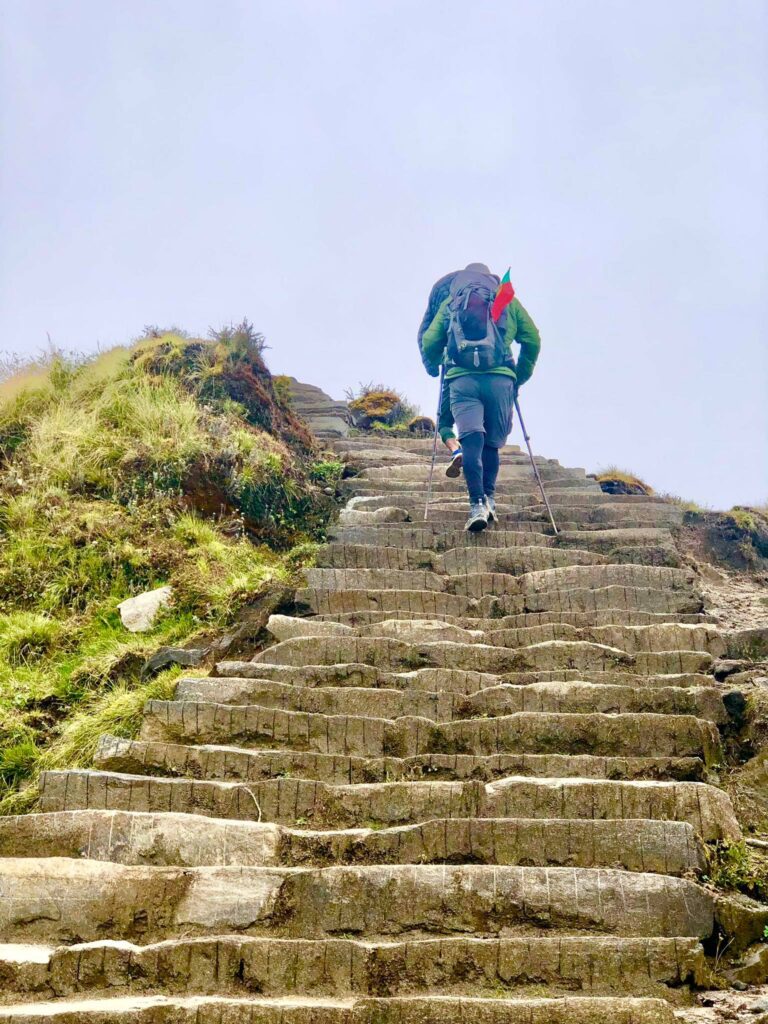
Now, let’s dive into the gist of this blog, that is, why Amigo Treks and Expedition’s 19-day Annapurna Circuit trek makes a best bet for 2025/26!
- Our 19-day Annapurna Circuit Trek begins with your arrival in Kathmandu and concludes with your departure from the same city- meaning we’re here to support you every step of the way, from the moment you land to the moment you leave. Take a look at the itinerary we’ve prepared below!
Day 01: Arrival in Kathmandu
Day 02: Kathmandu Valley sightseeing tour and trek preparation
Day 03: Drive to Besisahar (760m), (176 km), (7h)
Day 04: Drive to Chame (2,670m/8759ft),(66 km),(5h)
Day 05: Trek to Pisang (3,200m/10,498ft),(15km),(5-6h)
Day 06: Trek to Ngawal via Ghyaru (3,660m/12,007ft),(10km),(5h)
Day 07: Trek to Manang (3,540m/11,614ft),(11km),(5h)
Day 08: Acclimatization day in Manang
Day 09: Trek to Ledar (4200m/13,779ft),(11km),(6h)
Day 10: Trek to Thorung Phedi (4,525m/14845ft),(5km),(2-3h) or High Camp(4,925m/16,158ft),(6km),(3-4h)
Day 11: Trek to Muktinath (3,760m/12,335ft),(15km) (9-10h) via Thorung La Pass (5,416m/17,769ft)
Day 12: Trek to Lubra Valley (2,790m/9,153ft),(7km),(3h) and drive to Tatopani (1,190m/3,904ft),(4h)
Day 13: Drive to Shikha (2h) and trek to Ghorepani (2,880m/9,448ft),(6km),(3-4h)
Day 14: Hike to Poon Hill (3193m/10,475ft) and trek to Tadapani (2630/8628ft),(9km),(6h)
Day 15: Trek to Ghandruk(1940m/6,364ft),(5.5km), (3h)
Day 16: Drive to Pokhara (2-3h)
Day 17: Explore day in Pokhara
Day 18: Drive or fly to Kathmandu
Day 19: Departure day.
- The two nights in Kathmandu before the trek offers more than just a chance to explore the valley and experience its food, culture, history and lifestyle- they also give you ample time to recover from jet lag and take care of any last-minute preparations. You’ll be glad you chose this package, especially if your luggage doesn’t make it on the same flight as you- a situation that’s becoming increasingly common these days. Also, arriving from sea level, you’ll land at 1,300 meters, giving your body a head start on acclimatization and helping you prepare for the higher altitudes ahead.
- If you’re used to smooth, well-paved roads, it’s important to know that road conditions in Nepal can be quite different. Many major highways are still under construction-a situation that has persisted for years and seasonal floods and landslides often affect large stretches of these routes. As a result, long drives of over 7 hours on such roads can be quite exhausting, that also before stating the trek. That’s why our itinerary is thoughtfully designed to take you only as far as Besisahar on the first day, ensuring a more comfortable start to your trekking adventure.
- Although the road from Besisahar to Chame is only about 66 kilometers, it is largely off-road and in rough condition. Considering the ongoing state of the main highways, it’s unlikely that these secondary roads, lower in priority, will be paved or significantly improved in the next couple of years. For this reason, the second day’s drive is planned only up to Chame. From an altitude perspective as well, this leg of the journey involves a manageable gain of just a little over 1000 meters allowing for a safer and more comfortable acclimatization process.
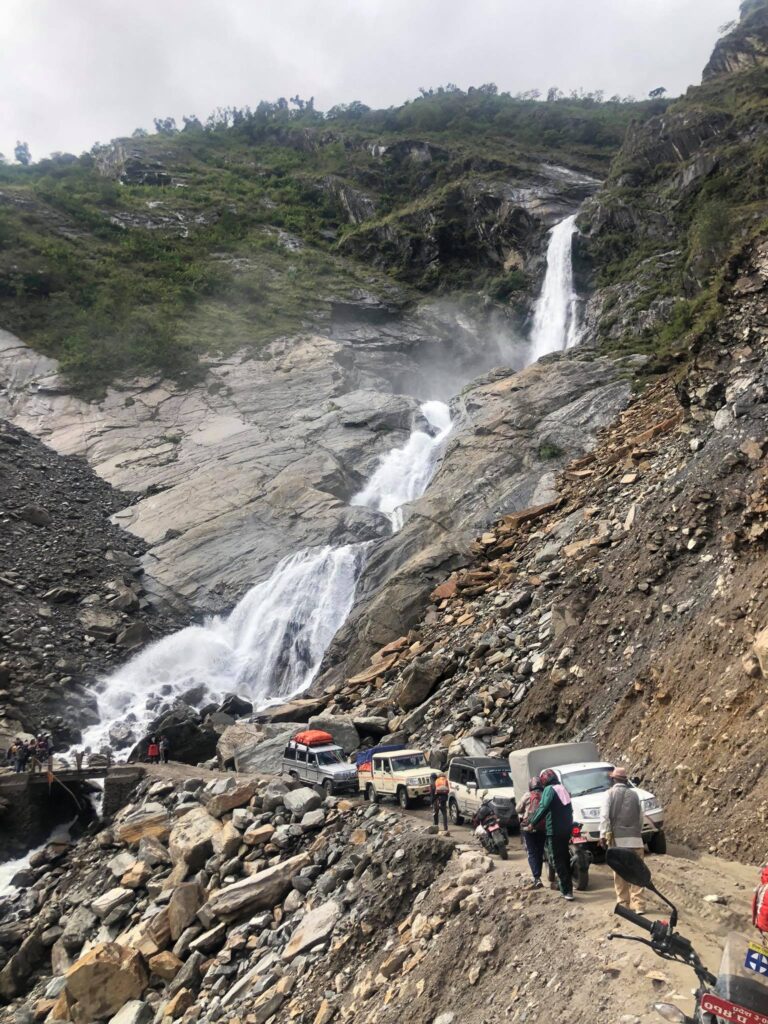
- For safer acclimatization, once the trek starts, the trek’s schedule is structured to limit daily altitude gain to no more than 1000 meters. Additionally, to enhance acclimatization, a full rest day is scheduled in Manang-situated above 3,000 meters and before ascending beyond 4,000 meters. Also, acclimatization becomes mandatory above 3,000 meters, which is why a full rest day is included in Manang to ensure a safe and gradual ascent. Additionally, this itinerary includes four days of trekking at varying altitudes between 3,000 and 4,000 meters before ascending higher-ensuring sufficient acclimatization and significantly increasing your chances of a successful trek.
- The town and villages selected for overnight stops in this itinerary are carefully chosen for their wide range of accommodation options, including deluxe and premium lodges, for those seeking a more comfortable or even luxurious stays.
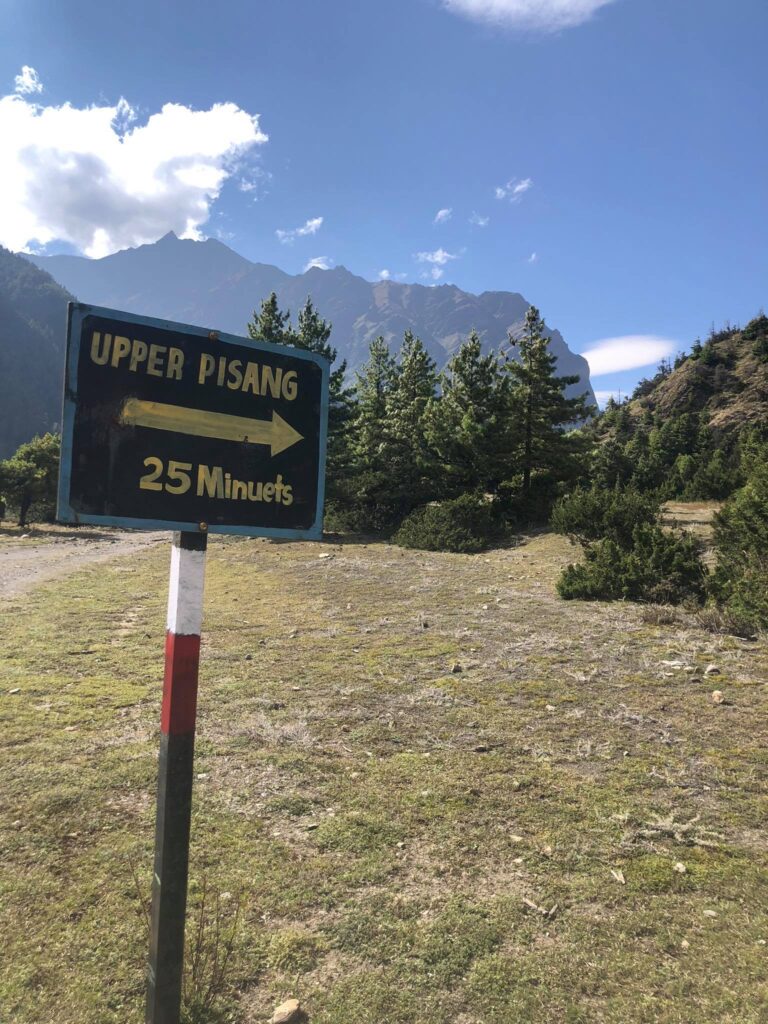
- This itinerary offers the flexibility to select your acclimatization hike. For shorter option, you can explore the area around Manang, while those seeking a more challenging hike can opt for the Ice Lake trek. Additionally, the itinerary also offers you the flexibility to decide whether you’d like to spend the night before the pass at Phedi or a kilometer beyond at the High Camp.
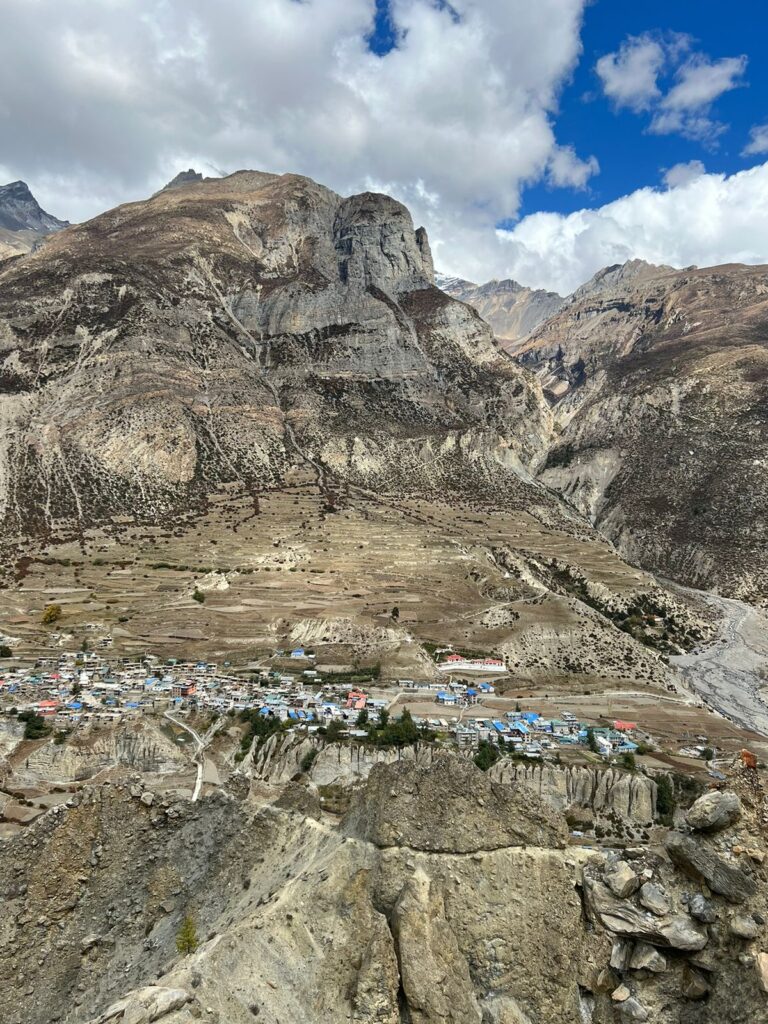
- The inclusion of Lubra Valley is a unique highlight that sets this trek apart, as most Annapurna Circuit routes don’t feature it. This addition introduces trekkers to one of Nepal’s oldest and pristine Bon villages, dating back to the 12th century. Housing only about 14 families the village still follows Bon tradition and culture.
- The use of road transportation from Besisahar to Chame, Lubra to Tatopani and Tatopani to Shikha helps trekkers minimize road trekking as much as possible. This adjustment creates extra space in the itinerary, allowing for the inclusion of more must-visit trekking sections in the Annapurna region.
- While most full/long Annapurna Circuit treks end after the Ghorepani Poon Hill hike, our 19 days journey goes beyond- taking you to Tadapani and Ghandruk. These two stunning destinations offer breathtaking mountain views and a deeper immersion into local culture before concluding your trek. This section, especially from Ghorepani to Tadapani, is also considered a paradise for birdwatching enthusiasts.
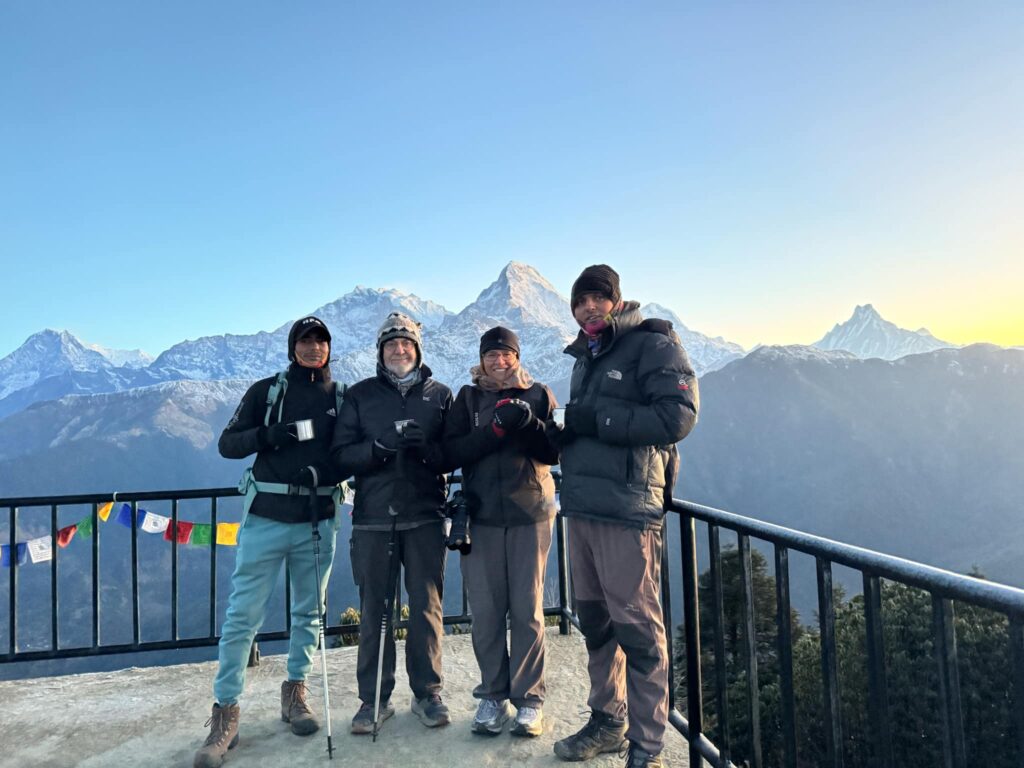
- The trek from Ghorepani to Ghandruk is also a part of the longer Annapurna Base Camp trail. By covering this section now, you’ll have the option to choose the shorter ABC route in the future, or decide whether you’d like to walk this section again on your next ABC trek. It also makes it easier if you want to extend your trek to the Annapurna Base Camp, last-minute.
- A night in Ghandruk, before ending the trek, offers one final opportunity to be transported to a simpler, more authentic time, before heading back to the hustle and bustle of everyday life.
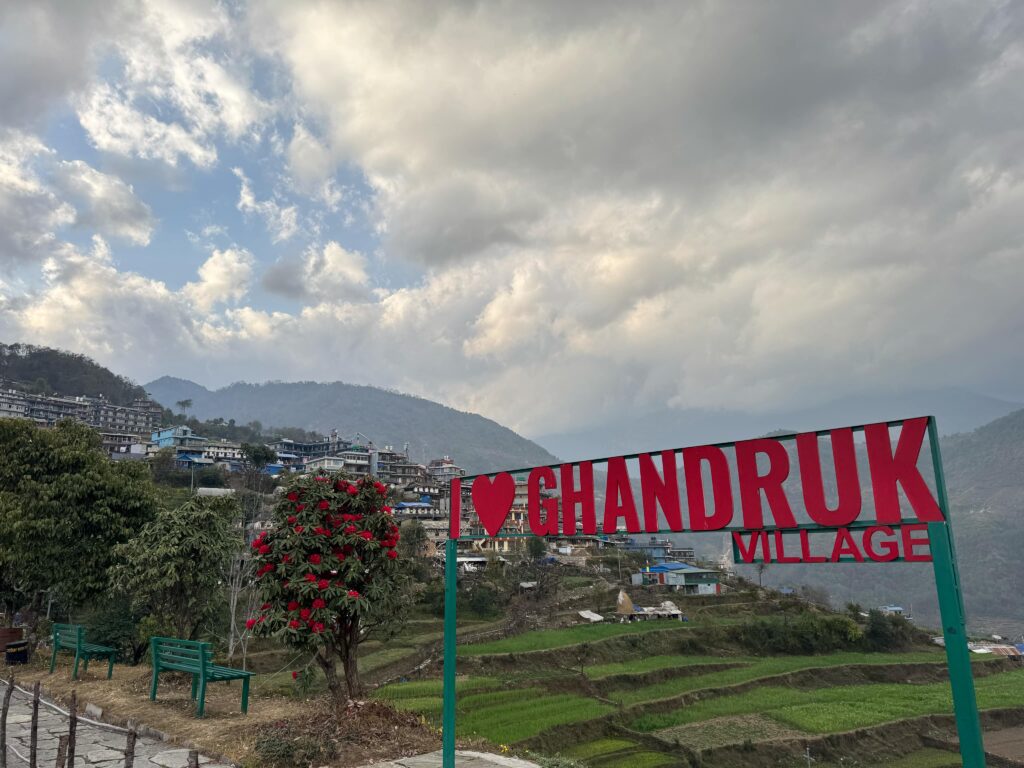
- This itinerary also includes a full day in Pokhara before returning to Kathmandu to conclude the journey. With its serene lakeside ambiance, vibrant nightlife, bustling markets, and rejuvenating spa, massage, sauna, yoga and meditation centers, Pokhara offer the perfect blend of natural beauty and modern comforts, allowing trekkers of all kinds to unwind and wrap up their adventure in style.
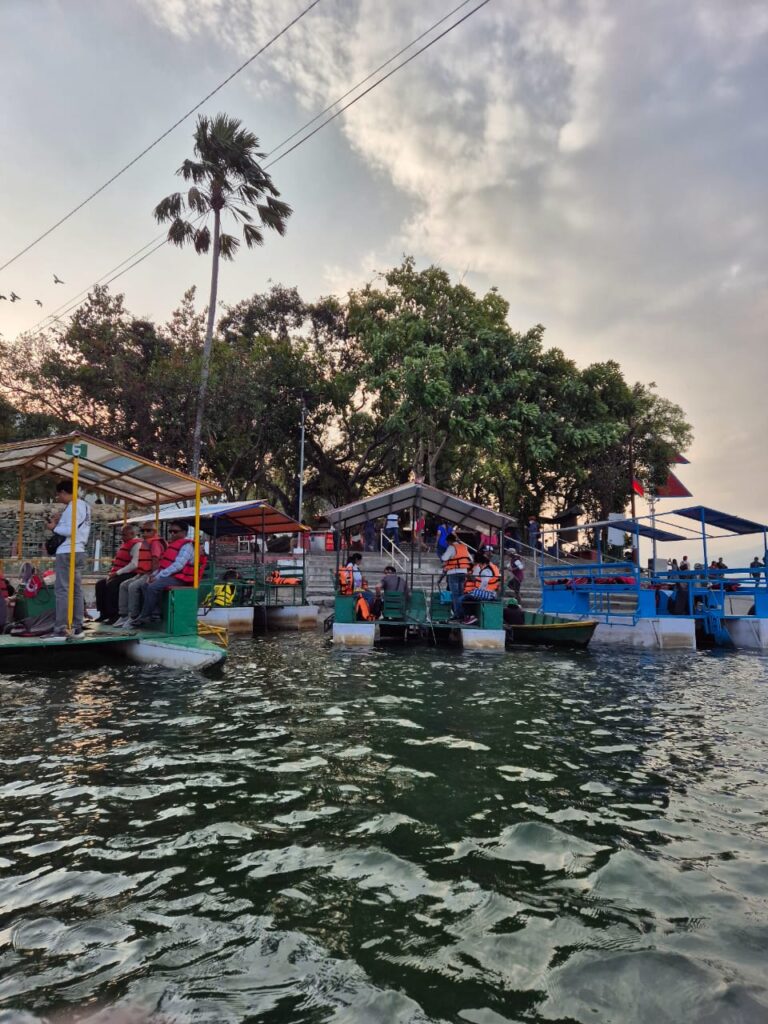
- The itinerary beautifully ends with one night in Kathmandu, before taking a long flight the next day back home of to your onward destination.
So, if the itinerary suits you, get ready for an unforgettable adventure that blends challenging treks, stunning landscapes, cultural immersion and the perfect amount of relaxation, making it a journey you’ll cherish for a lifetime. For 19 days Annapurna Circuit Trek package details and the cost of Annapurna Circuit Trek follow the link Full/Long Annapurna Circuit Trek or email us at info@amigotrekking.com



